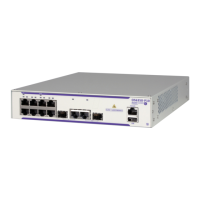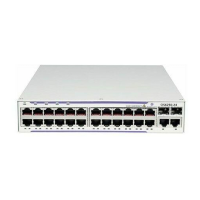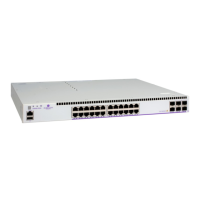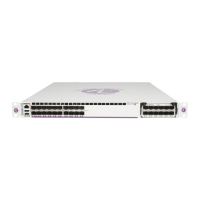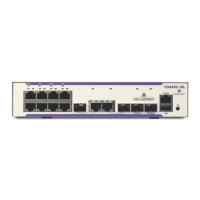Diagnosing Switch Problems Port Mirroring
OmniSwitch AOS Release 8 Network Configuration Guide December 2017 page 34-12
Remote Port Mirroring
Remote Port Mirroring expands the port mirroring functionality by allowing mirrored traffic to be carried
over the network to a remote switch. With Remote Port Mirroring the traffic is carried over the network
using a dedicated Remote Port Mirroring VLAN, no other traffic is allowed on this VLAN. The mirrored
traffic from the source switch is tagged with the VLAN ID of the Remote Port Mirroring VLAN and
forwarded over the intermediate switch ports to the destination switch where an analyzer is attached.
Since Remote Port Mirroring requires traffic to be carried over the network, the following exceptions to
regular port mirroring exist:
• Spanning Tree must be disabled for the Remote Port Mirroring VLAN on all switches.
• There must not be any physical loop present in the Remote Port Mirroring VLAN.
• Remote port mirroring (RPMIR) MTP port can have tagged VLAN and untagged default VLAN on it.
• The VLAN ID used for RPMIR cannot be assigned to the MTP port.
• The VLAN ID used for RPMIR cannot be assigned to the unblocked VLAN.
• On the intermediate and destination switches, source learning must be disabled or overridden on the
ports belonging to the Remote Port Mirroring VLAN.
• The mac-learning vlan disable command can be used to override source learning on an OmniSwitch.
The following types of traffic are not mirrored:
• Link Aggregation Control Packets (LACP)
• 802.1AB (LLDP)
• 802.1x port authentication
• 802.3ag (OAM)
• Layer 3 control packets
• Generic Attribute Registration Protocol (GARP)
For more information and an example of a Remote Port Mirroring configuration, see “Remote Port
Mirroring” on page 34-12.

